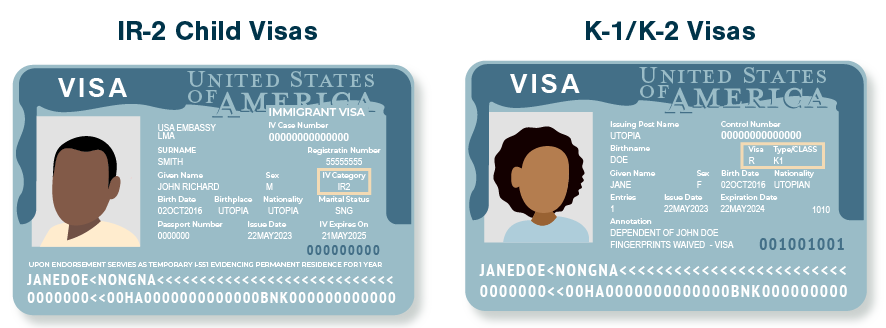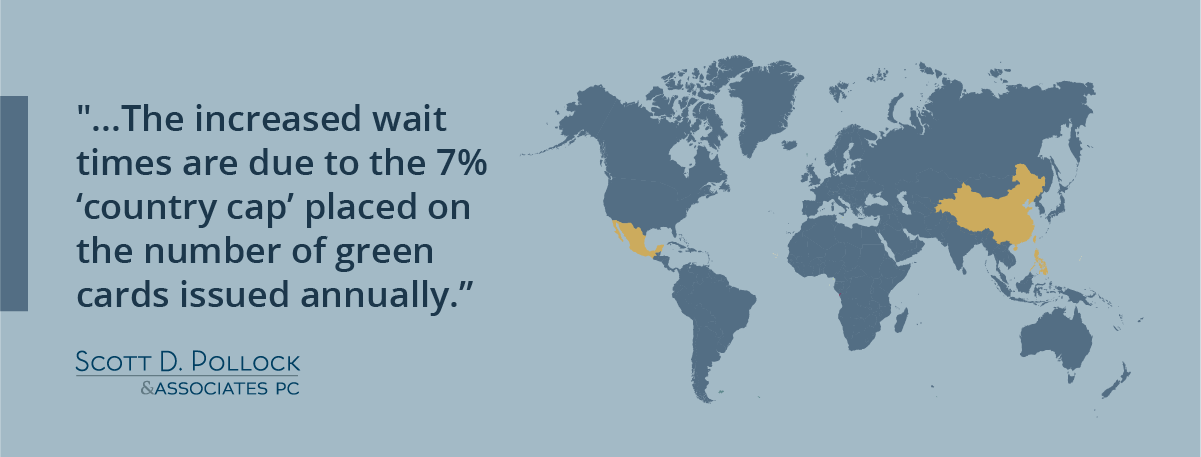
What to Expect: Immigrating to the United States With Your Family
Moving to a new country with your children is an extraordinary undertaking. There are many aspects of the journey to prepare for, from the practical (“Do I have all the right paperwork? Was it filled out correctly?”) to the emotional (“What will our life be like in another country?”). Another concern for immigrant families is choosing the correct visa. Families may require different visa types, depending on circumstances and accompanying children’s ages or married status.
There is a great deal of information to take in when moving from one country to another. Fortunately, you don’t have to figure it out as you go. You can minimize the confusion and stress when you have the best legal aid at your side.
In this article, we’ll explain what you need to know about family-based immigration visas. You’ll learn about the different types of visas for children, the costs associated with acquiring a visa, and other questions related to applying for United States citizenship as a family.
Family-Based Immigration: Types of Visas for Children
Not all visas apply to every person or family. There are different types of visas for different people and circumstances. These include visas for work, family, student, or marriage.
Many family and marriage-based visas allow applicants or beneficiaries to apply for citizenship with their children. Let’s look at two scenarios:
IR-2 Child Visas
Citizens of the United States may be able to sponsor their non-citizen children for a green card through the IR-2 child visa. This option is available for unmarried children of U.S. citizens under the age of 21. This visa enables a child to obtain a green card that allows them to work without an Employment Authorization Document (EAD).
K-1/K-2 Visas
Prior to applying for the K-2 visa, the engaged non-citizen must have a K-12 fiance(e) visa in process, proving the validity of the partnership. Eligibility for the K-1 visa is as follows:
- The sponsoring partner must be a citizen of the United States
- The couple must plan to marry within 90 days of the fiance(e)’s arrival in the country
- The couple must be legally eligible to marry (no previous, still-legal marriages in other countries)
- The couple must have met in person at least a month prior to filing
Once the criteria for the K-1 is met, the non-citizen may proceed with applying for the K-2 visa.
K-2 visas allow the engaged partners of U.S. citizens to bring any children they might have into the country. The children in question must be under 21 and unmarried to be eligible, and each child must have their own visa. The citizen sponsor needs to submit only one form, called I-229F: a “petition for Alien Fiance(e).” On average, the processing time for the K-2 visa is about seven months.
Successfully obtaining a K-2 visa requires the following documents brought to their interview:
- A completed Form DS-160 (and confirmation page)
- A recent medical exam
- Two passport-style photos
- Police certificates from their country of origin and any previous countries of residence for six months or longer (applicable to applicants over the age of sixteen)
- A valid passport and birth certificate
- Divorce or death certificates, if applicable
- Proof that the K-2 beneficiaries will be financially cared for
- Proof of an authentic partnership between the engaged couple
- Money for fees (will vary depending on the number of K-2 visas needed

Costs of Applying for Visas With Children
Family-based visa and green card applicants must pay application fees to the United States government. Payment is due when the application is filed. As can be expected, applications for additional people will require extra costs. However, this depends on where you’re applying from and whether you have a sponsor who is already a U.S. citizen.
The filing fee for a family-based green card is $1760 for applicants already living in the United States. For applicants outside the United States, the cost is $1200.
Here is a breakdown of current costs associated with other types of family-based visas:
- Immigrant petition for relative (I-130): $535.00
- Petition by an immediate relative for international adoption (I-600, I-800): $775.00
- Immediate relative applications (I-130, I-600, or I-800 petitions): $325
- Employment-based applications (I-40, I-526 petitions): $345
Your immigration lawyer can help you estimate the cost for your specific situation and the number of relatives immigrating with you.
The Citizenship Status of Children
Parents who have successfully immigrated to the United States may wonder what this means for their children’s citizenship status. The U.S. government grants citizenship to children born within the country. You will need to take additional steps for children born outside the country.
Generally, you can apply for a Consular Report of Birth Abroad (CRBA). The CRBA proves U.S. citizenship for your child. You can acquire a CRBA at the U.S. Embassy of the country where the child was born.
What About Dual Citizenship?
Many immigrant families seek residency within the United States while still wishing to keep citizenship in their country of origin. Dual citizenship can have many benefits, but unfortunately, not all countries allow it. Before seeking dual citizenship, parents need to understand the implications on their children’s rights in each country. Your immigration lawyer can help explain the nuances of this situation.
Legal Qualifications of Immigrant Children
Legally speaking, a “child” is a person who is unmarried and under age 21. After that age, married or not, they are no longer eligible for child immigration services. Understandably, “aging out” is a concern for older children of immigrants because the process can take some time. Changed circumstances can result in having to file applications again, which can mean waiting even longer to obtain a green card.
The United States government passed the Child Status Protection Act (CSPA) to address this issue. It prevents immigrant children from aging out as a result of backlogs with immigration agencies (which is, unfortunately, a common occurrence). Check with your immigration lawyer for a detailed explanation of CSPA provisions and how they could impact your children.
Stepchildren and Adopted Children
When adopting internationally or immigrating with stepchildren, you may need to acquire additional documents to support each family member’s eligibility. You must include these documents with your visa application.
You can acquire guides from the United States Citizenship and Immigration Services (USCIS) explaining the citizenship process for internationally adopted children. Prospective parents can learn what the post-adoption immigration process looks like in their search for adoption providers.
As for stepchildren, family members already U.S. citizens can sponsor non-immigrant stepchildren with their family-based green card application.
DACA
Deferred Action for Childhood Arrivals (DACA) protects immigrants who enter the United States unlawfully as minors. While not a “quick fix” for gaining citizenship, the DACA to Green Card Path to Citizenship does help eligible recipients obtain many benefits, such as work permits, driver’s licenses, and Social Security numbers.
The government evaluates the circumstances of unlawful entry and determines eligibility on a case-by-case basis. Your immigration lawyer can assist with renewing your DACA status or provide information on the current state of DACA.
The Visa Bulletin
Visa bulletins apply to families being sponsored for green cards by employers or other family members. Issued monthly by the Department of State, the Visa Bulletin shows which green card applications can proceed. The ability to proceed depends on the filing date of the petition for sponsorship. Families then receive a reasonable estimate of how long it will take to acquire their green cards.
Some countries have longer wait times than others. The increased wait times are due to the 7% “country cap” placed on the number of green cards issued annually. This issue is especially relevant for families immigrating from India, China, Mexico, and the Philippines because the demand from these countries is higher than in others. Each of these countries has separate green card lines and backlogs. The category of green card requested is also a factor that determines the time it takes to process.
For questions about wait times for green card applications for your country of origin, ask your immigration lawyer.

Necessary Supporting Documents for Family-Based Immigration Visas
Your application must include documentation for each family member traveling with you. The required documents will depend on specific circumstances, which your immigration lawyer can help you determine. These documents may include identification papers, including birth certificates or marriage licenses.
If you cannot access these documents, don’t panic: your lawyer can advise you on obtaining copies and alternative ways to prove your identity.
Let Scott D. Pollock & Associates, P.C. Help With Your Family Immigration Visas
Immigrating to the United States with children can be complicated. The legal experts at Scott D. Pollock & Associates, P.C. can eliminate the confusion and help ensure you have all the documents needed to move together as a family. The specifics of your journey are unique and deserve individual attention from lawyers committed to your best interests.
For questions or to schedule a consultation, contact us today.
